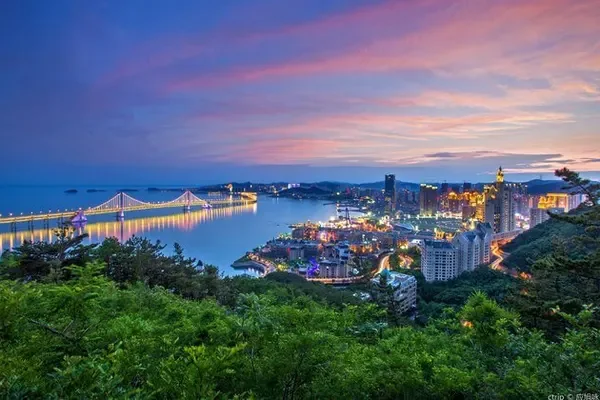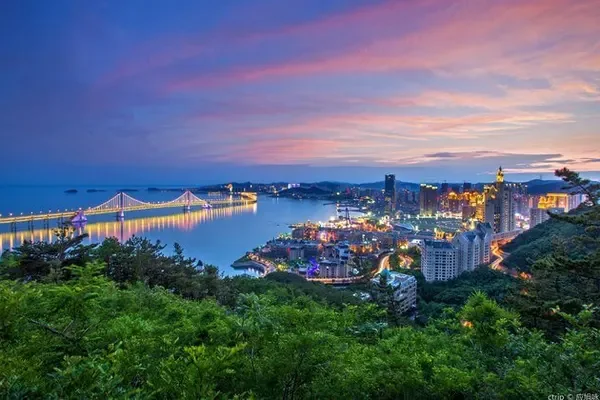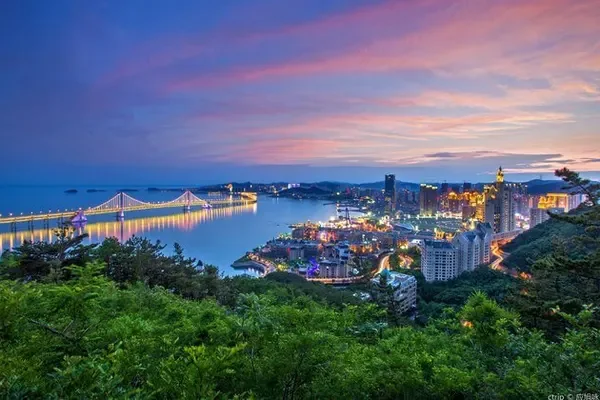Self-driving travel in 2014 (6) travel with grandson
Lugu Lake Nisai Village
In fact, the best place to watch the sunrise at Lugu Lake is on the mountain road between "Lige" and "Nisai". Many tourists choose to hike to Nisai Village. Nisai Village is a natural village of the Mosuo people at the foot of the Lion Mountain. It is next to Sichuan Province. After passing Nisai Village, they enter Sichuan. Nisai Village is a small Mosuo village with only a dozen families. Although the village is small, you can also stay and eat. The village is built by the lake, very quiet, and the scenery is beautiful. There is a cableway to the Lion Mountain, so you can get close to the Goddess Gemu Mountain. The famous lover tree and puppy love tree are located in Nisai Village. The simplicity, kindness and hospitality of the local people have also moved many tourists.
The path along the bank of Lige Village leads directly to Nisai Village, and after a bend along the path, there is a farmland in front of you, with a mud wall and wooden spikes on the wall to prevent livestock. Go to the end of the wall, go through the farmland behind the earth wall, go to the opposite hillside, identify it, and find the path. Then you will walk through a distinctive earth ditch, a bit like a dry ditch. The surface of the exposed stones beside the ditch is broken, which is formed by the trampling of horses all the year round. This ditch used to be run by caravans. It used to be a branch of the ancient tea-horse road to Sichuan, and no more than 500 meters left. Local residents can still be seen driving their horses past here. After turning over a ridge, the village in front of you is called Nisai Village. If you climb over two small ridges, you will see the cultivated land of Xiaoluoshui Village. You can take the urinal to enter Xiaoluoshui Village. The path only adds two kilometers, which means an extra ten minutes.
Nisai Village is also called Lisai Village. When you walk to the road in Nisai Village, there is also a small road through the farmland to the village. It takes up to 20 minutes to walk from Lige to Nisai. There are a few trees standing by the lake, and a lonely tree stands in the field. The small island of Nisai is also close at hand, and the scenery of Nisai is good. On the way, you can see Mani piles on the hillside near the lake.
Manidui, called "Duobang" in Tibetan, means piled stones. The "Duo Gang" is further divided into two types: the "Duo Gang that prevents evils and prevents disasters" and the "Duo Gang that suppresses evils". In the mountains, intersections, lakesides, and riversides when you enter the Tibetan area, you can almost see altars made of stones and slabs. Mani pile is also known as "God pile". Most of these stones and slabs are engraved with six-character mantras, wisdom eyes, statues of gods, and various auspicious patterns. They are also masterpieces of Tibetan folk artists.
The sun was shining on the lake, and we walked along the ancient tea-horse road to Nisai village in the north. The road is about eight kilometers away, and the walking path is only a little more than two kilometers away from Lige, which takes only ten or twenty minutes. Nisai Village is famous for its "lover's tree", and it is also called lover's bay (little lover's bay under the jurisdiction of Yunnan, and a larger lover's bay under the jurisdiction of Sichuan). Next to the lake, all the trees that grow are in pairs, the branches cling to each other in mid-air, and the roots intertwine underground, like intimate partners, like glue. This is a small scenic spot for traveling around the lake. It is more famous because of this name. Many couples come here to take pictures.
Turning over a small hill, you can see the amazing scenery by the lake in the village from a distance. By the quiet lake in the morning, two trees, one tall and one short, stand quietly side by side by the lake, as if two couples who came out for a walk in the morning light, stopped by the lake when they were tired, and enjoyed the lake view , looking at the sea of clouds in the distance, listening to the soft singing of the birds on the bird island not far away, and whispering softly, they are not very close, but anyone can see that they must be a close couple, Lovers with a heart-to-heart connection, they are lover trees that make every passerby's heart beat. Although I don't know how many years they have been standing here, I believe that the wind and rain they have experienced together is enough for them to cuddle together in such a loving and loving way.
Slowly approaching, a pair of trees are like lovers, facing each other silently with affection. The branches of the lover tree stretch out into the lake, graceful and graceful, the shadow of the tree and the white clouds in twos and threes are reflected on the lake, there is a large field that has not been sown with crops, and the leisurely horses are gnawing dry grass, the whole picture is peaceful and intoxicating. The white clouds reflected on the surface of the lake made people mistakenly think that it was a puff of light from the lake, giving people the same visual enjoyment. It is a rare enjoyment to stand under the lover tree and enjoy the comfort brought by the sunshine all over the body.
We did not continue in the direction of Xiaoluoshui Village, but returned. If you continue along the highway or the path around the lake, you will reach Xiaoluoshui Village after bypassing or turning over Jingtang Mountain. The top of Jingtang Mountain is the Great Compassion Conch Sutra Hall, and the west side of the Great Compassion Conch Sutra Hall is the Yang Erche Namu Museum. After crossing Jingtang Mountain, it takes only two minutes to go down the mountain to Xiaoluoshui Village. After crossing Xiaoluoshui Village, you enter Sichuan.
Returning to Lige Bay from Nisai Village (Lover Tree), I saw an inn with a special architectural style, and had breakfast in the coffee lounge of the inn—Mosuo Baba, a kind of cake made of highland barley flour, and then Made with oil, the taste is slightly rough, but the taste is really good. There are not many people in the inn. The coffee bar is made of red bricks to form tables and chairs, covered with cool linen cushions, and the curtains are also made of pure white linen thread. There are pictures of Lugu Lake on the walls and wooden screens. Strands of silk threads hang down from the top, and there are strings of mood collections inscribed by tourists hanging on the threads. The whole environment is fresh and simple, which suits us very well. Leaning on the pillow, letting the sunlight slant your eyes, or flipping through one or two magazines, time slips by like this. The proprietress came to chat with us even if she had nothing to do. They are from Ninglang, and the couple rent a house here to do business. It's the off-season now, and the prices can't go up. However, New Year's Day is coming soon. When the Spring Festival comes, house prices and catering prices will increase. One year, that is, during the holidays, I can make more money. The main reason is that the rent is too expensive.
Back at the inn, we checked out the room, bid farewell to the proprietress, and we started today's trip again.
First, along the S307 Provincial Highway and Yongning Line, we went to Zhudi Village of the Mosuo matriarchal tribe in the daughter country, which is about five kilometers away.
Today's full-day schedule is: first visit Zhudi Village of the Mosuo matriarchal tribe in the daughter country, then return to Daluoshui→Sanjia Village→Langfang→Shankua→Nawa→Caohai→Caohai Bridge (Walking Marriage Bridge)→Muzhi Village→Aliu Village→Luguhu Town (Zuosuo)→Zhongwa Village→Mukwa Village→Waqua→Libai Lover’s Beach→Dazu Village (Dazui Village), and finally to Yangerchena Mu's mother's house and Erche Namu Museum, look back at Xiaoluoshui, go around the lake in a counterclockwise direction, and then return to the hotel near Mukua for accommodation. In this way, we can watch the sunset and morning glow this afternoon and tomorrow morning by the lake outside the hotel.




















